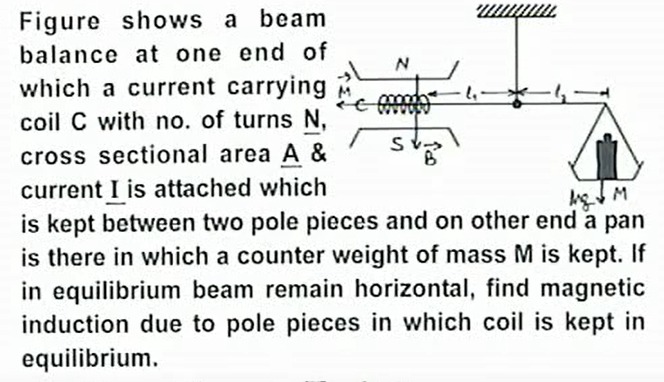Question
Question: Figure shows a beam balance at one end of which a current carrying coil C with no. of turns $\underl...
Figure shows a beam balance at one end of which a current carrying coil C with no. of turns N, cross sectional area A & current I is attached which is kept between two pole pieces and on other end a pan is there in which a counter weight of mass M is kept. If in equilibrium beam remain horizontal, find magnetic induction due to pole pieces in which coil is kept in equilibrium.

NIAl1Mgl2
Solution
The beam balance is in equilibrium when the torques on both sides of the pivot are balanced. The coil is at a distance l1 from the pivot, and the counterweight of mass M is at a distance l2. The weight of the counterweight is Mg. The magnetic force on the coil, let's call it Fmag, acts at a distance l1 from the pivot. For equilibrium, the torque due to the magnetic force must balance the torque due to the weight. Assuming the magnetic force Fmag acts upwards to counteract the weight on the other side: Fmag⋅l1=Mg⋅l2
The magnetic force on a current-carrying coil in a magnetic field is given by Fmag=NIAB, where N is the number of turns, I is the current, A is the cross-sectional area, and B is the magnetic induction. Assuming this formula for the magnetic force: NIAB⋅l1=Mg⋅l2
We are asked to find the magnetic induction B. Rearranging the equation to solve for B: B=NIAl1Mg⋅l2
